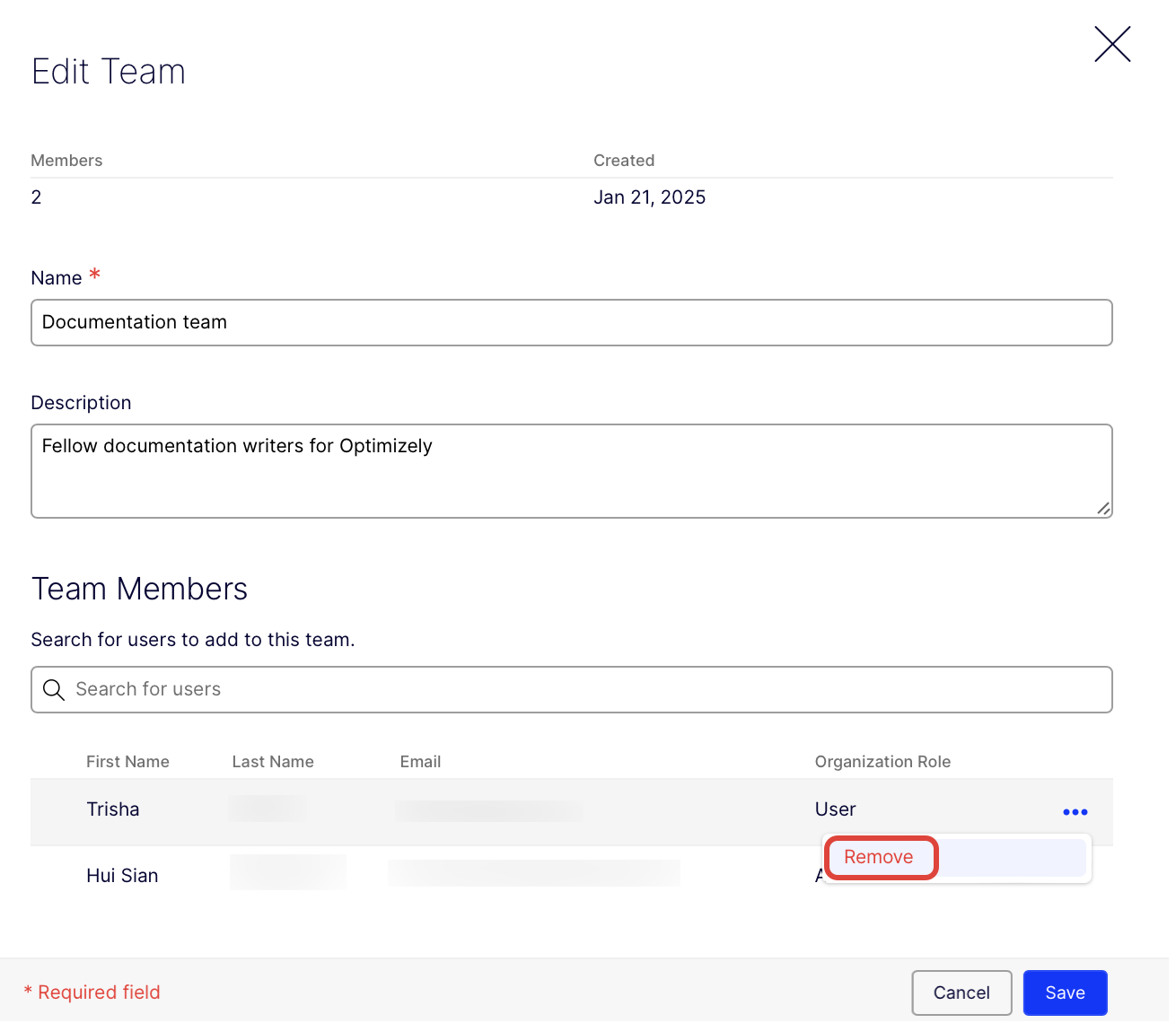Configure teams
Configure teams and their granular permissions in Optimizely Feature Experimentation.
Create teams to manage granular permissions for entities in bulk, streamlining updates. Grouping collaborators into a team automatically applies assigned permissions to all members, simplifying onboarding and adjustments.
You can use teams across your Optimizely Feature Experimentation projects. However, to gain access, you must first add a collaborator to a project and assign them a project role. See Collaborators or Manage users if your organization uses Opti ID.
Create a team
Important
Only account Administrators can create and manage teams.
-
Go to Account Settings > Teams.
-
Click Add Team.

-
On the New Team page, enter a Name.
-
(Optional) Enter a Description.
-
In the Search for users to add to this team field, type the name or email address of the collaborator you want to add. The results are automatically displayed.
Note
The UI uses the term user in fields and labels. This documentation refers to these individuals as collaborators.
-
Click the collaborator from the drop-down list to add them to your Add users list.

-
(Optional) In the Add users list, click More options (...) > Remove to delete the collaborator. You can re-add them by following steps five and six.
-
Click Save.
Edit a team
-
Go to Account Settings > Teams.
-
Click the team's name you want to edit.

Alternatively, click More options (...) > Edit team.

You can update the Name or Description. You can also add collaborators or remove collaborators.
Add collaborator
Note
You can remove collaborators at the same time as you add collaborators.
-
In the Search for users to add to this team field, type the name or email address of the collaborator you want to add. The results are automatically displayed.
-
Click on the collaborator from the drop-down list to add them to your Add users list.
-
(Optional) Repeat steps one and two to add more collaborators.
-
Click Save.
Remove collaborator
Note
You can add collaborators at the same time as you remove collaborators.
-
For the collaborator you want to remove, click More options (...) > Remove. This deactivates (grays out) the collaborator.

-
Repeat to remove additional collaborators.
-
Click Save.
Configure granular permissions for a team
Granular permissions assigned to a team are cumulative with the permissions assigned to individual collaborators. For example, if a collaborator is a Viewer for a flag but is part of a team that is an Editor for the same flag, that collaborator has Editor access. A collaborator can belong to multiple teams. A collaborator has the highest role assigned to them, whether individually or through a team.
To assign granular permissions, see the following:
Flag creation behavior for collaborators in a team
When a collaborator in a team creates a flag or an audience, Feature Experimentation automatically assigns them the Admin role for that flag or audience using granular permissions. This ensures the collaborator can immediately manage access and share it with others.
To create a flag or audience, a collaborator must have Editor or Admin access in at least one environment, either directly or through their team. For example, if a collaborator has the Viewer project role but is part of a team with Editor access to an environment, they can create flags and audiences.
Note
If your project does not use granular permissions, team members must have the Editor or Admin project role to create flags or audiences.
Updated about 1 month ago